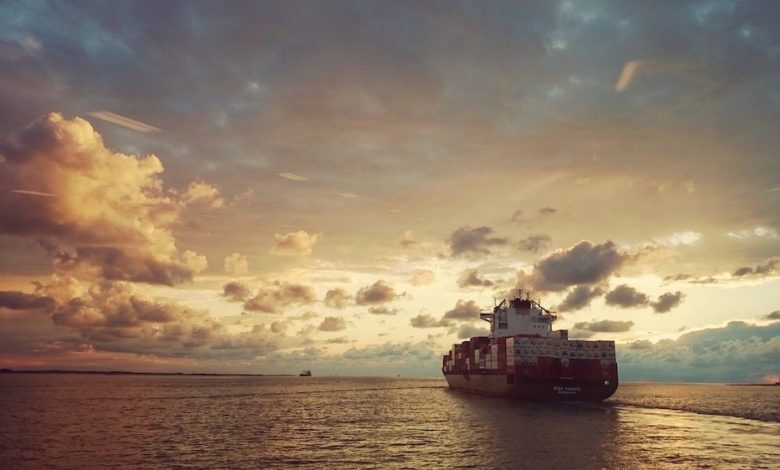Will the Carbon Intensity Indicator re-shape the shipping industry?

Attention so far has been on the impact of the EEXI, but the CII could have a dramatic effect on the marketability of vessels, says Georgios Plevrakis from ABS.
The regulations that support the process of decarbonizing the shipping industry will do far more than reduce carbon dioxide emissions; they will create unprecedented transparency on which are the most efficient and which the least efficient vessels.
With the focus so far understandably on compliance with the EEXI, the shipping industry has yet to grasp the implications of the Carbon Intensity Indicator (CII), which will radically impact vessel operations for decades to come.
Because it assigns an ‘energy efficiency’ rating to all ships, the CII effectively creates a market mechanism which enables charterers, financiers and regulators to grade the performers.
An initial analysis conducted by ABS using 2019 EU-MRV data suggests that to achieve the desired A, B or C energy efficiency categories by end of 2030, based on anticipated reduction factors, 92% of the current containership fleet will require some kind of operational change, with the figures for bulk carriers at 86%, tankers at 74%, gas carriers at 80% and LNG carriers 59%.
With availability of ship finance moving inexorably towards those companies working to market-based measures such as the Poseidon Principles, a vessel’s present and forecasted CII rating may in time come to be seen as an indicator of a vessel’s suitability for purchase or refinancing. Shippers too, will increasingly be subject to scrutiny and their Environment, Sustainability and Governance (ESG) goals will be reflected in their supply chains, making them likely to prioritise the most efficient vessels.
EEXI and CII
Like the EEDI for newbuildings, the EEXI is a filter, a process of assigning a value to a vessel’s design characteristics and providing a goal-based means of compliance. Once attained through technical means, the EEXI is a fixed value and its implications on performance are easily understood. It represents a burden in terms of administration and a challenge in terms of technical compliance, potentially requiring verified adjustments to a vessel’s power rating and investment in energy efficiency technologies.
The CII on the other hand creates a downward trajectory on a ship’s carbon intensity, which is the amount of carbon emissions generated by a unit of transport work, equivalent to one tonne of cargo carried one nautical mile. The CII will assign all ships a performance category between A-E, but attaining a category does not automatically represent compliance.
Vessels in the better performing categories A and B may well be beneficiaries of positive market sentiment. Middle of category C represents the Required Annual Operational CII – effectively the acceptable baseline of the regulation.
Vessels in the D and E categories will have to demonstrate improvement annually (in practice less than 12 months), moving progressively towards category C. Ships that spend three consecutive years in category D, or one year in category E will be subject to a mandatory review of the Ship Energy Efficiency Management Plan (SEEMP) and a plan of corrective actions must be made to achieve the Required Annual Operational CII.
At present, the CII is scheduled to enter into force 1 January 2023, on first annual, intermediate or renewal IAPP survey or the initial IEE survey. Guidelines are to be developed and completed before MEPC 76 and the (EEXI and CII) measures shall be reviewed for effectiveness before 1 January 2026.
Making the necessary improvements will require enhancing the existing SEEMP to include a minimum 3-year implementation to achieve the Required Annual Operational CII. What is unclear at present is the sanction mechanism for vessels that fail to satisfy the regulation i.e. how a sanction will be imposed and then lifted. The industry needs clarity, hoping to be provided soon after the just completed MEPC 76 meeting.
The bigger picture
The carbon intensity of international shipping improved between 2012 and 2018 as a whole, as well as for most ship types. However, improvements in carbon intensity of international shipping have not followed a linear pathway and more than half were achieved before 2012, largely due to the adoption of slow steaming. The pace of carbon intensity reduction has slowed since 2015, with average annual percentage changes ranging from 1 to 2%.
The maritime industry faces an unprecedented challenge in complying with the IMO’s targets for decarbonization, but the milestones of 2030 and 2050 are only part of the story.
Even before these dates, owners and charterers will need to demonstrate that the vessels they buy and operate are high performers and that less efficient ships are subject to performance improvements. Shipyards too, will need to prioritise higher efficiency vessels and may have to improve their standard designs to achieve the minimum acceptable CII levels.
The downside risk for owners is that vessels operating in the lowest CII categories (D or E) or those that struggle to demonstrate improvement will potentially be subject to financial and chartering penalties, even if they are relatively young. The potential for large cargo owners, whether publicly listed or simply high profile, to make chartering decisions based on a CII rating may not have been the intention of the regulation. But it will serve to act as a market barometer for shipping’s customers when choosing the most efficient vessels on the market.
